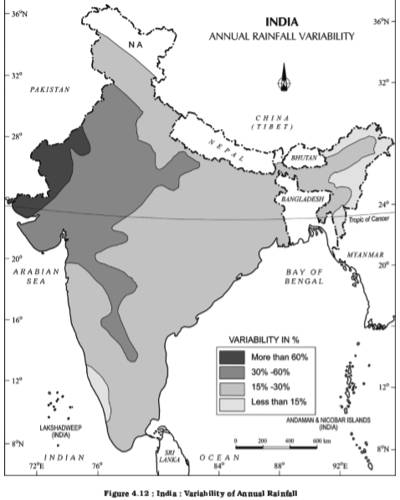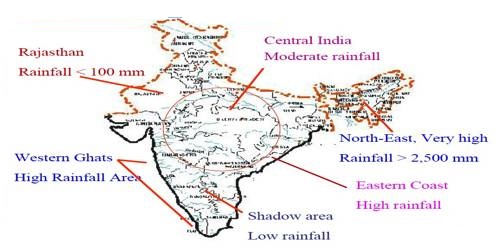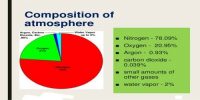Variability of Rainfall in Indian Monsoon
The monsoon of South Asia is among several geographically distributed global monsoons. Despite the observations spread over centuries, the monsoon continues to puzzle the scientists. There is great regional and temporal variation in the distribution of rainfall. Over 80% of the annual rainfall is received in the four rainy months of June to September.
A characteristic feature of rainfall in India is its variability. The variability of rainfall is computed with the help of the following formula:
C.V. = (Standard Deviation / Mean) x 100,
where C.V. is the coefficient of variation.
The basic rainfall data analyzed were the daily rainfall during June to September at 273 well-distributed stations over the Indian region for the period 1901–1989 obtained from IMD.

The values of coefficient of variation show the change from the mean values of rainfall. The actual rainfall in some places deviates from 20-50 percent. The values of coefficient of variation show variability of rainfall in India. A variability of less than 25 percent exists on the western coasts, Western Ghats, northeastern Peninsula, Eastern Plains of the Ganga, northeastern India, Uttaranchal and Himachal Pradesh and south-western part of Jammu and Kashmir. These areas have an annual rainfall of over 100 cm. Availability of over 50 percent exists in the western part of Rajasthan, the northern part of Jammu and Kashmir and interior parts of the Deccan plateau. These areas have an annual rainfall of less than 50 cm. Rest of India have a variability of 25-50 percent and these areas receive an annual rainfall between 50 -100 cm (Figure).














